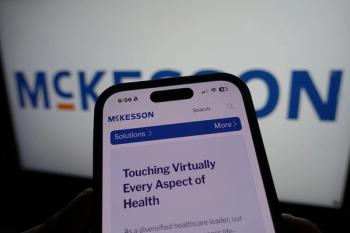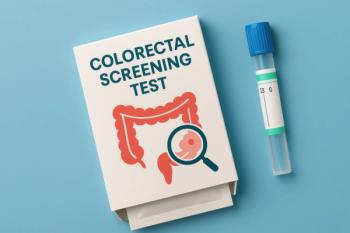
Ovarian Cancer Survival Varies Widely Among Asian American Subgroups
Key Takeaways
- Disaggregating Asian American subgroups reveals significant survival disparities in ovarian cancer, often masked when analyzed as a single group.
- Asian Indian/Pakistani patients exhibit the highest 5-year survival rates, while Hawaiian/Pacific Islanders show the lowest among Asian subgroups.
Researchers found significant differences in ovarian cancer survival among Asian American subgroups, emphasizing the importance of analyzing these groups separately.
Ethnic-specific survival disparities among Asian American patients with
Past studies determined that ovarian cancer survival significantly varies across racial groups, with Asian Americans having the highest survival and Black Americans having the lowest. These disparities are likely due to a combination of factors, including differences in tumor characteristics, treatment, sociodemographic characteristics, and behaviors.
Asian Americans consist of numerous subgroups, with growing evidence showing the importance of disaggregating these groups when evaluating cancer mortality and survival. The researchers explained that some disparities may be missed if Asian Americans were examined as a single group. Categorizing Asian Americans as such is the usual approach when conducting ovarian cancer studies. However, whether their survival advantage is observed when each subgroup is examined separately is unknown.
So far, only a few studies disaggregated Asian American ethnic subgroups when evaluating ovarian cancer survival, resulting in conflicting findings. To clarify these results, the researchers conducted a disaggregated survival analysis of Asian American patients with ovarian cancer using the National Cancer Institute’s Surveillance, Epidemiology, and End Results (
They specifically used the November 2022 SEER Incidence Data with Census Tract Attributes database, which included patients diagnosed with cancer between January 1, 2006, and December 31, 2020, from 19 population-based cancer registries nationwide.1 Age-standardized 5-year cause-specific survival rates were calculated for patients with primary invasive ovarian cancer diagnosed between the ages of 20 and 84. They only analyzed non-Hispanic White patients and those from 7 Asian ethnic subgroups: Asian Indian/Pakistani, Chinese, Filipino, Hawaiian/Pacific Islander, Korean, Japanese, and Vietnamese.
Using a weighted approach, the researchers conducted multivariable Cox regression analyses to calculate average hazard ratios (AHRs) and 95% CIs to quantify the risk of ovarian cancer death among patients in each Asian ethnic subgroup vs non-Hispanic White patients.
Of the 68,129 patients with ovarian cancer analyzed, most were non-Hispanic White patients (n = 61,817). Conversely, of those belonging to Asian ethnic subgroups, most were Filipino (n = 1507), followed by Chinese (n = 1470), Asian Indian/Pakistani (n = 1280), Vietnamese (n = 580), Korean, Hawaiian/Pacific Islander (n = 464), and Japanese (n = 459).
The researchers discovered a statistically significant difference in mean age at diagnosis across all groups, with non-Hispanic White patients being diagnosed at an older age (61.39 years) than all Asian/Pacific Islander patients (P < .001). Among the Asian ethnic subgroups, Asian Indian/Pakistani patients were the youngest at diagnosis (53.77 years) and Japanese patients were the oldest (60.76 years; P < .001).
Also, a lower percentage of distant tumors was observed among all Asian ethnic subgroups vs non-Hispanic White patients (60.07%), with the lowest being among Vietnamese patients (48.10%; P < .001).
Apart from Hawaiian/Pacific Islanders, patients across all Asian ethnic subgroups had a higher overall 5-year survival rate than non-Hispanic White patients (47.90%); Asian Indian/Pakistani patients showed the highest survival rate (56.12%). However, Hawaiian/Pacific Islander patients were the only subgroup to demonstrate lower 5-year cause-specific survival than non-White Hispanic patients (44.99% vs 47.90%, respectively). Similarly, when considering tumor stage, the lowest 5-year survival was among Hawaiian/Pacific Islander patients with distant ovarian cancer (28.59%).
After adjusting for tumor, sociodemographic, and treatment characteristics, Asian Indian/Pakistani patients were 17% less likely to die from their disease than non-Hispanic White patients (adjusted hazard ratio [aHR], 0.83; 95% CI, 0.75-0.92). Conversely, Hawaiian/Pacific Islander patients were 28% more likely to die than non-Hispanic White patients (aHR, 1.28; 95% CI, 1.07-1.53). Other statistically significant factors associated with better survival included being diagnosed at a younger age and an earlier stage.
Lastly, the researchers acknowledged their limitations, including the limited information beyond basic sociodemographic, tumor, and treatment characteristics. Therefore, there are no available data on other factors impacting cancer outcomes, like comorbidities or behaviors. Despite their limitations, they emphasized the need for a disaggregated approach in future studies on Asian American patients with ovarian cancer.
“It is clear that more research is needed to uncover the behavioral and quality of care factors that likely play a role in ovarian cancer survivorship...” the authors concluded. “Only by taking a disaggregated approach when studying ovarian cancer among Asian Americans can future interventions be properly tailored to address this highly fatal disease.”
References
- Lee AW, Poynor V, Siddiqui S. Disparities in ovarian cancer survival among ethnic Asian American populations, 2006-2020. Gynecol Oncol. Published online November 2, 2024. doi:10.1016/j.ygyno.2024.10.017
- Surveillance, Epidemiology, and End Results Program. National Cancer Institute. Accessed November 12, 2024.
https://seer.cancer.gov/
Newsletter
Stay ahead of policy, cost, and value—subscribe to AJMC for expert insights at the intersection of clinical care and health economics.













































